|
I have been a "Digital Photographer" for the past three years, and a quick review of the many images that 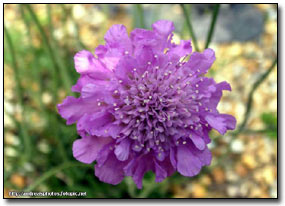 reside on my C drive tells me that 70%+ are floral pictures. These range from 'straight from camera'
shots without post processing, to some weird and wonderful Photoshop experiments. It occurred to me to explore the reasons behind my liking for floral photography and to analyze just why I favor this particular genre above other choices.
reside on my C drive tells me that 70%+ are floral pictures. These range from 'straight from camera'
shots without post processing, to some weird and wonderful Photoshop experiments. It occurred to me to explore the reasons behind my liking for floral photography and to analyze just why I favor this particular genre above other choices.
When I compare, say, an image I have taken in recent weeks with my Canon 300D to an early picture from my first digital camera, a Ricoh, I can see an enormous difference, not just in image quality, but in my own perception of the best format to take the shot. Very subtly, almost by osmosis, I am developing the
photographic eye that helps me to take a well-considered view of the subject before I press the shutter button.
Flowers make excellent photographic subjects for a variety of reasons: they are static (on a calm day)
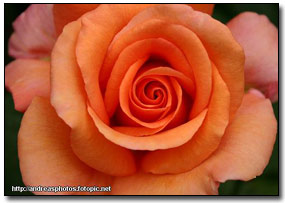 colorful, ever changing, and in the UK, we have the choice of a wide seasonal variation. Flowers and
leaves alike possess pleasing symmetry, as well as a broad spectrum of shade and texture. Variants in sunlight/shade affect their appearance, as does the difference before and after rain - or the judicious application of a fine water spray!
Flowers may fall within the parameters of weedy, through luscious, to blowsy. Their centers can provide scope for some curiously erotic imagery via symbolic spikes and folds. The thistle and allium families, with their sharp edges and spheres, are geometric, and grasses are capable of emulating a row of soldiers, or a waving sea of graceful stems. Tree bark may resemble anything from elephant hide to an aerial landscape map.
colorful, ever changing, and in the UK, we have the choice of a wide seasonal variation. Flowers and
leaves alike possess pleasing symmetry, as well as a broad spectrum of shade and texture. Variants in sunlight/shade affect their appearance, as does the difference before and after rain - or the judicious application of a fine water spray!
Flowers may fall within the parameters of weedy, through luscious, to blowsy. Their centers can provide scope for some curiously erotic imagery via symbolic spikes and folds. The thistle and allium families, with their sharp edges and spheres, are geometric, and grasses are capable of emulating a row of soldiers, or a waving sea of graceful stems. Tree bark may resemble anything from elephant hide to an aerial landscape map.
The variety of plant life is infinite, from the waxy blooms of the water lily to the delicacy of the fuchsia, from the first bright green unfurling leaves in spring to the crisp russet curls that result when the summer moisture has gone; there is massive scope to use one's imagination in creating exciting, different images.
Everyone will have a favorite place to photograph natures' bounty, be it within domestic gardens, recreation grounds, by river or shoreline, or perhaps in the more formal surroundings of botanical parks.
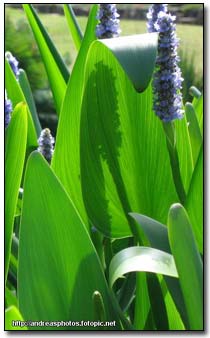 Considering my own progression in floral photography, the aspects that really stand out for me are:
Considering my own progression in floral photography, the aspects that really stand out for me are:
Composition - learning to view a plant from every angle, then taking a decision as to whether it lends itself to a central shot or to something more oblique. Post-processing possibilities in composition are endless. If you have an image of a flower with strong outlines such as a gerbera, it is very easy to cut this out from its original background and move, duplicate, resize, recolor etc until you have a whole bouquet of flowers from a single bloom, if that is what you wish.
Lighting - assessing the optimum conditions to photograph flowers. Early morning and late afternoon are generally best (as with most other photography). If outdoor light conditions do not suit, cutting a bloom and photographing it indoors under an artificial light source can work, although it will invariably give a less natural look; my personal preference is to photograph in place.
Focus - how difficult it seemed at first to focus on the elements I really wanted in a photograph! I would skip from auto, to macro, to AV and EV always (and still to a great extent) shying way from manual settings as being too 'difficult'. Ultimately I have settled on making use of my camera's AV setting, which removes the mystery element.
Good focus is within my grasp now I have learned to trust the camera, and I know that if I choose an AV setting of 5.0 I will get a beautifully sharp center to an image with a soft background. I have 'read up' on the meaning of the F-stop and whilst much is still a mystery to me, I recently realized that my photos are becoming less 'lucky shots' and more controlled by my own assessment and input.
I do not believe that a tripod is essential to a sharp flower shot. Even in windy conditions, patience
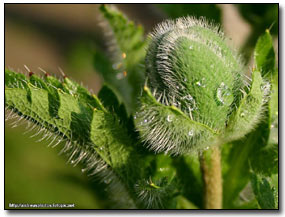 will reward when the breeze drops and a photo is captured in that nano-second when all that is visible in the lens is still. Obviously, the use of a tripod, beanbag, wall, or whatever is available on which to rest a camera may be the most desirable scenario, but the contortions that are sometimes necessary to capture the best shot may obviate the use of any outside props, and a good 'capture' is always worth at least one attempt.
will reward when the breeze drops and a photo is captured in that nano-second when all that is visible in the lens is still. Obviously, the use of a tripod, beanbag, wall, or whatever is available on which to rest a camera may be the most desirable scenario, but the contortions that are sometimes necessary to capture the best shot may obviate the use of any outside props, and a good 'capture' is always worth at least one attempt.
Color - the majority of vibrantly colored flowers benefit from enhancing hue and saturation. Whites are difficult not to 'blow out' and it is worth under exposing by 2/3 to compensate. Reds are notoriously hard to capture and my greatest success with them has been with late afternoon shots.
Yellow is another camera-unfriendly color, it seems to blow out similarly to white or can look very hard and I have found the best 'yellow' shots happen when there is some green background to absorb the strident spectral notes. Many floral images lend themselves to conversion to black and white, sepia, or even a combination; perhaps a splash of color from an individual flower against a monochrome background.
Macro - Taking close-up shots of flowers and leaves has honed my 'assessing depth of field' skills to a significant degree. If you are taking such a shot you have so many options, such as:
- Do you want the entire flower in focus or just its center?
- Do you want to the background blurred or sharp?
- Are you going to centralize the shot?
- Is the flower going to fill the frame?
Experimentation in this area is very useful. Generally for each successful shot (and an assessment of this may be as high as 1 in 20) I will have probably have taken up to ten different views and tried three or more different camera settings.
I did not deliberately set out to concentrate on this area of photography; but apart from the ease of obtaining pleasing imagery, the greatest benefit is the discovery that the tenets I apply to my flower
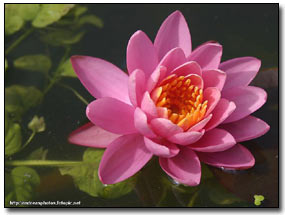 pictures naturally extend to the other images I photograph.
pictures naturally extend to the other images I photograph.
The overall improvement that I see in my own work owes much to the application of methods, ideas and techniques that I have learned through experimentation and practice. My photography also benefits greatly from the aid of critique, tutorials, viewing others' work and a developing interest in hitherto unexplored or unnoticed elements of what is around us.
I would advise anyone who may be struggling to see progress in their photography to try to concentrate on a single favored aspect, whether it is flowers, birds, architecture or portraiture. Seek out your own 'comfort level' within your chosen favorite field and you should gradually discover, as I have, that the useful information you have absorbed will imbue all your imagery, thus allowing allow you to progress into what becomes your own distinctive, personal style.
|

